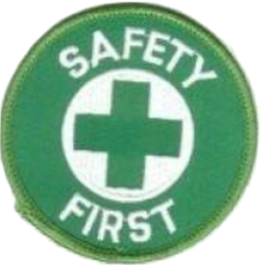Business and labor are preparing to wage a lobbying battle over a new rule expected later this year that could have a profound effect on how health and safety are handled in the workplace.
Over the past year, the Occupational Safety and Health Administration (OSHA) has been gathering input from trade associations and unions while promoting an initiative that would require workplace managers to institute their own Injury and Illness Prevention Program — often referred to as I2P2.
 The rule would require employers to identify their workplaces’ health and safety hazards on their own and take action to resolve them.
The rule would require employers to identify their workplaces’ health and safety hazards on their own and take action to resolve them.
In a January speech before the watchdog group Public Citizen, OSHA head David Michaels said the rule “represents the most fundamental change in workplace culture since the passage of the OSHA Act” — the 1970 law that created the agency.
Michaels and his agency has promoted the initiative heavily. Since announcing the rule in April, the OSHA chief has mentioned it in almost a dozen speeches. The agency has held at least five public meetings with stakeholders to get feedback on how to draft it.
President Obama’s fiscal 2012 budget request asks Congress for $2.4 million to help develop I2P2, which is an increase since he did not seek any funding for the rule for fiscal 2011.
Michaels told The Hill that his agency is working on the regulation because OSHA does not have the manpower to stop every workplace accident.
“It would take over 100 years for OSHA to visit every workplace under its jurisdiction,” Michaels said. “OSHA believes that workers will be better protected if each employer has a proactive plan to find and fix hazards in their workplaces so that workers don’t get hurt.”
Economic and feasibility analyses of the regulation were slated to be released in late 2010. But those reports were delayed to June in order “to gather more stakeholder input” and crunch more data, Michaels said.
OSHA’s focus on the rule has caught the attention of a number of business groups. Members of the Coalition for Workplace Safety, like the U.S. Chamber of Commerce and the National Association of Manufacturers, have grown concerned about the rule.
“This would be the most sweeping regulation that OSHA has ever put out,” said Marc Freedman, the Chamber’s executive director of labor law policy.
Freedman believes the rule could require employers to identify all hazards in the workplace, even ones not already mitigated for by OSHA.
“There is one school of thought that they would not have to issue another regulation ever again,” Freedman said.
Michaels said, however, that no new health and safety standards would be developed under the rule.
“It is intended to help employers develop a systematic plan to find and fix workplace hazards that are currently covered under OSHA standards or that are currently covered under the General Duty Clause,” Michaels said.
The rule’s supporters say it will be the federal version of laws already on the books in California, Minnesota, Washington and many other states. Those laws require employers to have a written health and safety plan to deal with workplace accidents.
Those plans typically designate an employee as the safety officer, establish training programs for workers and set up a system to report and evaluate workplace hazards. That should allow businesses to collaborate with inspectors on how best to lessen risks for workers, according to the rule’s supporters.
Peg Seminario, the AFL-CIO’s director of health and safety, called the rule “a framework” that should help employers find those hazards before they can do harm to their employees.
“You are looking at problems, trying to identify them and address them before workers get hurt,” Seminario said about the rule.
OSHA has discussed proposing the rule before. Agency officials in the Clinton and George W. Bush administrations had similar ambitions.
But much of that discussion at that time was overwhelmed by a massive lobbying campaign by business groups against an ergonomics standard issued by OSHA. Using the Congressional Review Act, a Republican-led Congress was able to the overturn the ergonomics rule in 2001.
Freedman of the Chamber believes OSHA wants to re-establish that ergonomics standard using the I2P2 rule. Since the ergonomics rule was rejected under the Congressional Review Act, the agency cannot reissue a regulation that would be similar to the voided standard.
“Not only is this similar to the ergo rule, this will be how this OSHA does ergonomics,” Freedman said. “This is their ergo rule in style and substance.”
Seminario of the AFL-CIO said the reference to the voided ergonomics standard is a scare tactic and has been used before, most recently, she said, with OSHA’s proposed regulation that would restore a column on employer injury and illness logs to record workers’ musculoskeletal disorders. The rule was temporarily withdrawn earlier this year.
“They are trying to make this something that this is not,” Seminario said.
A major player in the ergonomics debate, however, disagreed with Freedman’s take. Charles Jeffress, head of OSHA from 1997 to 2000, said the rule under consideration by the agency now would not result in an ergonomics standard.
The rule “changes the dynamic where OSHA doesn’t have to go rule-by-rule. Instead, employers are asked to identify hazards in their own workplace and asked to fix them,” said Jeffress, now the chief operational officer for the American Association for Justice, a trial lawyers’ trade group.
“You don’t become a stickler for what the black-letter rules say. You become a stickler for whether or not employees are protected from injury,” Jeffress said.
